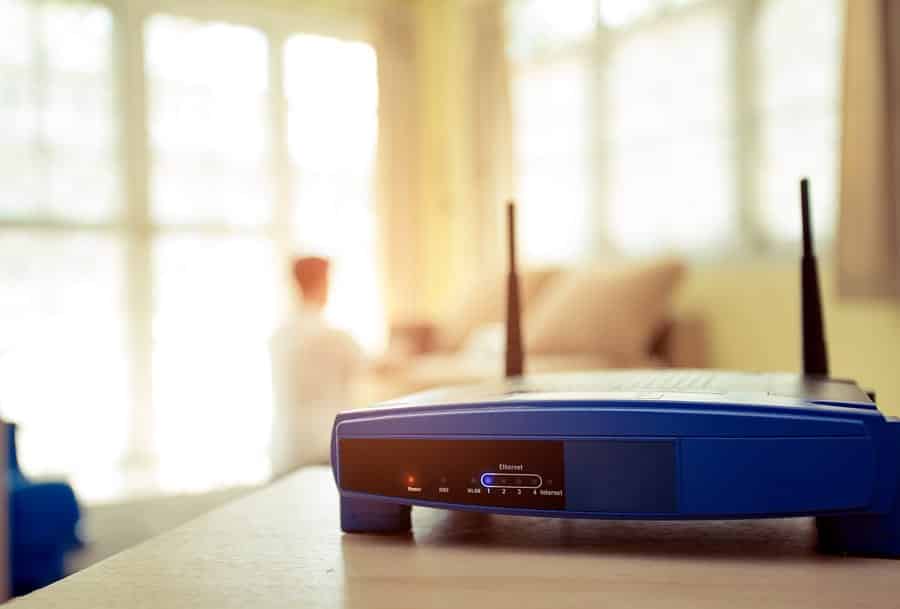Every aspiring designer wants to know the secrets behind the best product designs. It’s why we read biographies of famous entrepreneurs and artists. We want to soak up all their wisdom as if by osmosis and hope that somehow their genius takes hold and we’re able to see even one-quarter of their success.
Unfortunately, genius does not travel via osmosis — and really, that “big secret” you’re looking for isn’t anything you can replicate. But you can look at traits they exhibit and decisions they make and do your best to learn from them. In an effort to do just that, we took a hard look at some of the best product designs currently on the market and what makes them so great. Here are four of them:

YubiKey 4 Nano
These days, we’re talking about cyber security quite a bit. Hackers seem to be doing everything they possibly can to obtain your personal information and steal your identity. According to the Bureau of Justice Statistics, an estimated 17.6 million Americans were victims of some form of identity theft in 2014. That’s about 7 percent of Americans aged 16 and older.
There are plenty of tips to protect your identity: shredding documents with personal information, changing passwords regularly (or even every once in awhile), and checking your credit report annually. Another suggestion becoming more common is to utilize two-stage, or two-factor, authentication where possible. This means you enter your password as usual, but then the service you’re logging into texts you an authentication code that you must enter as well. While this method won’t be winning any awards for best product design, it’s generally effective.
This is the space in which Yubico has been making the Internet safer with their YubiKeys since 2007. Over the years, their product line expanded to include both USB-A and USB-C compatibility, but our very favorite is their YubiKey 4 Nano. It’s super tiny and designed to fit virtually undetected into a USB port. You simply leave it in the port and touch it when extra authentication is required. Really, that’s it.
YubiKeys use FIDO U2F authentication (which they created with Google) to provide peace of mind to consumers, businesses, and even government bodies across the world. Their two-factor authentication works with Facebook, Gmail, LastPass, Dashlane, Dropbox, and hundreds of other services — and if it’s good enough for Google and Facebook to use internally, it’s certainly good enough for the average consumer.
We believe YubiKeys can help consumers protect themselves against identity theft in a way that even the least-tech-savvy of us can handle, which is why they’re on our best product designs list. They’re fast, easy, and affordable and we can’t wait for you to try them.
Amazon Kindle
During a presentation back in 2007, Amazon CEO Jeff Bezos asked his audience why books were the “last bastion of analog.” He certainly had a point — by 2007, the world was becoming increasingly digital, Apple had released its first iPhone, and the dedicated team of Ives and Jobs were working hard on their second, which would catapult our digital use to new levels.
But Bezos, head of the largest online book retailer (it’s easy to forget that Amazon began as a book retailer), was looking for a way to revolutionize his own industry — which was an uphill battle at the time, as e-readers had generally been spectacular market failures at this point in history. But if history has taught us anything, it’s that entrepreneurs will always find a way.

It’s not difficult to see why Amazon’s first Kindle was one of the best product designs at the time. It held about 200 books, but came with a storage slot that could fit a standard SD card and increase the device’s book capacity to 1,000. Digital downloads from the Kindle Store were cheaper than new paperbacks and were delivered in under a minute via Amazon Whispernet — which meant no more shipping costs. You could even shop right on the Kindle instead of using a computer.
The Kindle also boasted newspaper subscriptions, so you could read The New York Times first thing in the morning on a portable digital device, rather than a huge paper that sat on your front lawn in the rain for a couple hours.
Over the past 10 years, Amazon has released multiple versions of the Kindle and even a tablet called the Kindle Fire, on which you can read books, of course, but also watch TV shows, play games, surf the Internet, or get your shopping done. They even released a Kindle app that links to your account so you can use the Kindle Store without actually needing to purchase a Kindle device.
As we’ve said so many times before, good design doesn’t stop at how a thing looks. It continues into how a thing works, which of course, blends into how it changes lives — and that’s why we believe the Kindle is still one of the best product designs currently on the market.
It completely revolutionized the book industry. It changed the way we consumed literature by making it more affordable, more accessible, and even more interesting.
AmpliFi Mesh Wifi System
If you have the Internet at home, you probably have a wifi network — because who wants to be plugged into the wall these days? If your wifi router is anything like ours, it’s rather unsightly, so you try to hide it behind something on a shelf or underneath a piece of furniture. It has a series of blinking lights that make no sense and there aren’t any buttons on it, save a reset button — and if you press that, all your settings are gone. Now you have to call your cousin Ed who works in IT to come over and fix it for you. In the words of every late night infomercial: there’s got to be a better way!
The good news is that someone did find a better way — in a definite best product design kind of way. The AmpliFi Mesh Wifi System will solve all your home wifi problems. From ugly routers to difficult interfaces to dead spots, they’ve got you covered. First of all, nothing about this device is ugly. The router is a clean, white cube with an actual read-out on a screen instead of a row of icons the average consumer doesn’t understand. It’s not something you’ll feel the need to hide behind a stack of books, by any means.

And then there’s those pesky dead spots. Maybe in your office, the furthest point in the house from the router, your Internet lags or even cuts out occasionally. This is a pretty big problem, especially if you do any work from home. You’re trying to get stuff done! You don’t have time to deal with temperamental Internet connections.
While AmpliFi claims the router will work in most homes without dead spots, they recognize that not all homes are created equal and wifi strength depends on too many variables to guarantee a consistent signal everywhere. So to fix this problem, they developed the MeshPoint, which is basically like a signal booster that pairs with your router to eliminate the dead spots in your home.
But wait, there’s more! You can finally leave your cousin Ed alone because AmpliFi has an app that makes setup a breeze. You can track router performance, allow guests to use your wifi without a password, and even monitor who (on what device) is using your network (and for how long).
The best product designs solve people’s pain points and we’re thrilled with the way this system is doing just that. We can only hope that other wifi router companies take note of AmpliFi’s design features here. The system is easy-to-use, modern, and quite beautiful, which is more than we can say for basically every router we had before this one.
Ring Wireless Doorbell
Doorbells have been around for a long time and before they were invented, people just knocked. There’s no wiring or setup or fees (which should lead to a best product design nomination). But let’s face it: in this digital age — this video-obsessed, technology driven world we live in — the doorbell department needed to step it up a notch.
Well put away your knock knock jokes, kids, because the Ring Wireless doorbell is going to change the way you answer the door. In addition to an actual doorbell, the Ring Wireless system uses a camera so you can see exactly who is at your door prior to answering — whether you’re at home or not.
If someone rings the doorbell, or simply walks within range of the camera (up to 30 feet), it will start recording. You’ll receive a notification from the Ring app and live video will be streamed right to your smartphone. You can see whomever is at the door and speak with them if you’d like. The video can even be automatically stored to their cloud for a nominal fee each month.
The video can be easily shared with law enforcement, neighbors, or anyone else who might need such information. This has come in handy for homeowners for a variety of reasons, including warding off potential burglars in their neighborhood, providing proof of damage for an insurance claim, and catching wanted criminals. Talk about one of the best product designs available!

We love that this is a product you don’t have to be physically at home to use and best yet: the person at your door doesn’t have to know you’re not there. The feeling of security a device like this provides is more than worth the money, especially if crime is common in your area or you travel frequently. Although, we hope you don’t see anything too frightening when you open the app in the middle of that important meeting.
What Makes These Best Product Designs So Perfect
Compiling a list of “best product designs” is actually pretty difficult. Honestly, this list could have easily been 50 items long. It’s hard to narrow down the millions of really great products on the market to just a handful. But you might notice that all of these products have a couple major things in common. First and foremost, they solve a problem — and they solve it well.
Maybe the problem they solve is not a huge problem (although that depends on your perspective), but it’s a problem nonetheless — and for a lot of people, which is basically the foundation of a successful product. The groundwork is laid out, but you’re in charge of making sure it has a beautiful design and that it functions better than any other solution in the marketplace.
The other commonality here is that people actually want to use these solutions. The Kindle makes reading more fun. The AmpliFi wifi router turns at-home Internet solutions — something that almost no one enjoys dealing with — into something far less infuriating through a simple idea that has been under our noses for years: a mobile app!
The bottom line here is to not overthink things in your new product design. If you see a problem, come up with a solution that is fun and sustainable, but don’t feel like you have to reinvent the wheel. The answer might be right in front of you. And with enough hard work and determination, maybe you’ll develop one of the best product designs of all time.
Speaking of the best product designs, we have one more for you. Proto.io lets anyone build mobile app prototypes that feel real. No coding or design skills required. Bring your ideas to life quickly! Sign up for a free 15-day trial of Proto.io today and get started on your next mobile app design.
What are the best product designs from your perspective? Let us know by tweeting us @Protoio!





